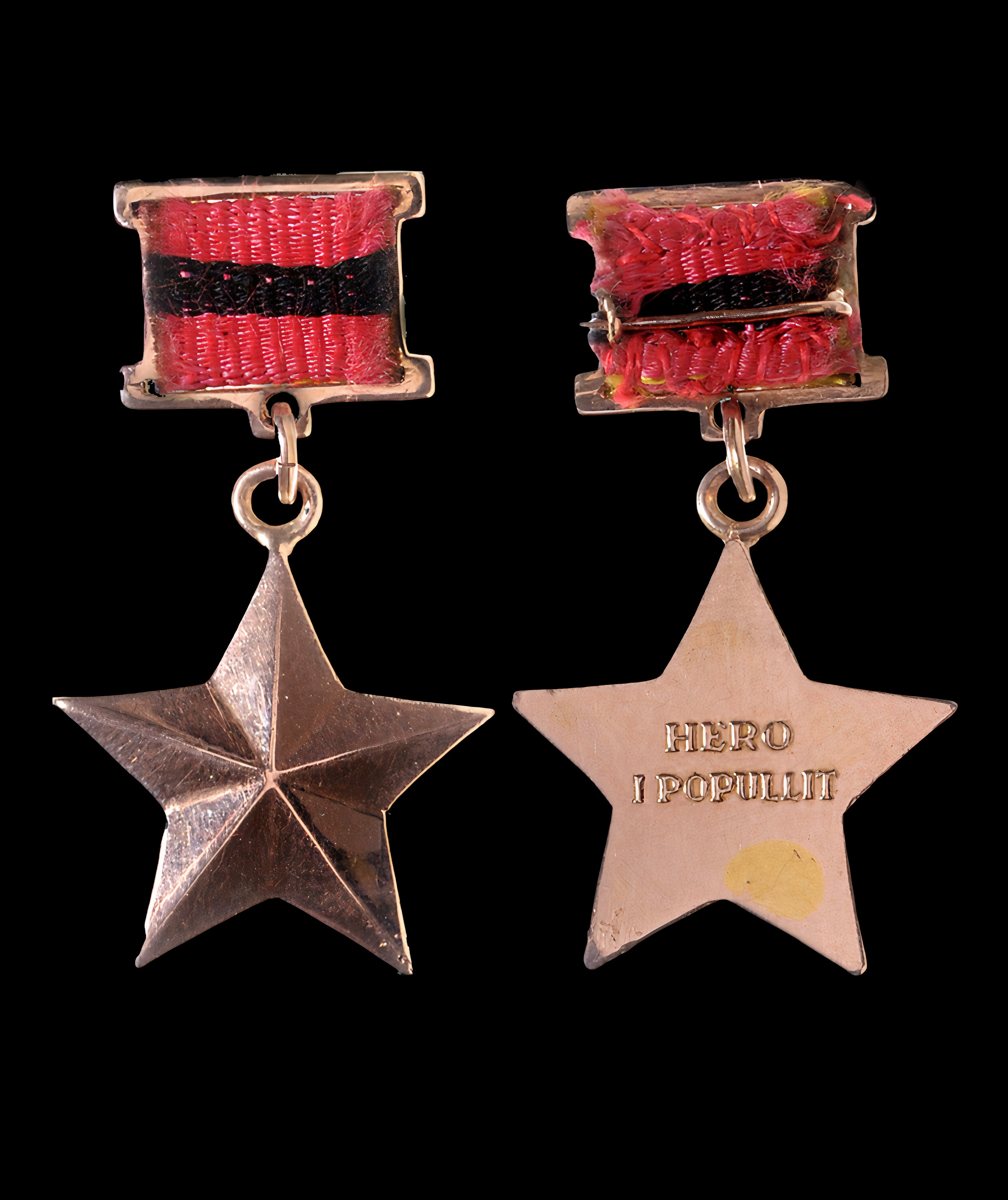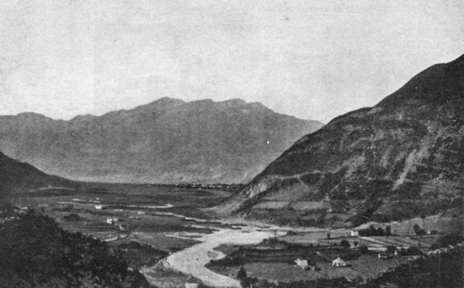|
Aleksandër Stavre Drenova
Aleksandër Stavre Drenova (; 11 April 187211 December 1947), commonly known by the pen name Asdreni, was an Albanians, Albanian poet, rilindas, translator, writer and the author of the poem which later became the national anthem of Albania. He is regarded as one of the most influential Albanian literature, Albanian writers of the 20th century and composed most of his Albanian Renaissance-inspired known works during that period. Born in the village of Drenovë, Asdreni completed his academic studies at the University of Bucharest in Romania where he enthusiastically committed himself to the Declaration of independence of Albania, Independence of Albania from the Ottoman Empire. He maintained close liaison with fellow Gjergj Fishta and Lasgush Poradeci and was notably inspired by the patriots Girolamo de Rada and Naim Frashëri. ''Rreze dielli'', a collection of 99 poems, was his first prominent work which he dedicated to the national hero of Albania Gjergj Kastrioti Skanderb ... [...More Info...] [...Related Items...] OR: [Wikipedia] [Google] [Baidu] |
Drenovë
Drenovë ( rup, Ndãrnova; Bulgarian and mk, Дреново) is a village in the former Drenovë Municipality of the Korçë County in southeastern Albania. After the 2015 local government reform it became part of the municipality Korçë. History According to the French cartographer Alexandre Synvet, the village had 660 Greek Orthodox inhabitants in 1878. Later in 1903, Heinrich Gelzer, following a visit to both ''Drenkowa'' and neighbouring Boboshticë, described the local population as a Bulgarian island in Albanian sea, remained from the new nomad migration of Slavic population after Albanian mass emigration from 14th and 15th centuries. Georgi Traychev wrote in 1911 that the village consisted of 140 households and 678 Bulgarian inhabitants. Demographics According to German linguist Gustav Weigand during the first decades of the 20th century Bulgarian populated villages Drenowo and Boboshtitsa were a Slavic linguistic island in Albania. According to some ethnic Macedonia ... [...More Info...] [...Related Items...] OR: [Wikipedia] [Google] [Baidu] |
Gjergj Fishta
Gjergj Fishta (; 23 October 187130 December 1940) was an Albanian Franciscan friar, poet, educator, politician, rilindas, translator and writer. He is regarded as one of the most influential Albanian writers of the 20th century due to his epic masterpiece ''Lahuta e Malcís'' and the editor of two of the most authoritative magazines after Albania's independence, ''Posta e Shypniës'' and ''Hylli i Dritës''. Notably being the chairman of the commission of the Congress of Manastir, which sanctioned the Albanian alphabet, he was part of the Albanian delegation to the Versailles Conference, 1919. In 1921 he was a member and became the deputy chairman of the Albanian parliament, later on in the '20s and the '30s he was among the most influential cultural and literary figures in Albania. After the communist regime came to power, his literary oeuvre had been taken out of circulation and it stayed so until the fall of communism. Biography Early life Gjergj Fishta was born to ... [...More Info...] [...Related Items...] OR: [Wikipedia] [Google] [Baidu] |
Gjergj Kastriot Skanderbeg
, reign = 28 November 1443 – 17 January 1468 , predecessor = Gjon Kastrioti , successor = Gjon Kastrioti II , spouse = Donika Arianiti , issue = Gjon Kastrioti II , royal house = Kastrioti , father = Gjon Kastrioti , mother = Voisava Kastrioti , birth_name = Gjergj ( see Name) , birth_date = 1405 , birth_place = Principality of Kastrioti , death_date = 17 January 1468 (aged 62) , death_place = Alessio, Republic of Venice , place of burial = Church of Saint Nicholas, Lezhë , religion = Islam Catholicism , occupation = Lord of the Principality of Kastrioti, , signature = Dorëshkrimi i Skënderbeut.svg Gjergj Kastrioti ( la, Georgius Castriota; it, Giorgio Castriota; 1405 – 17 January 1468), commonly known as Skanderbeg ( sq, Skënderbeu or ''Skënderbej'', from ota, اسکندر بگ, İskender Bey; it, Scanderbeg), was an Albanian feudal lord and military commander who led a rebellion agai ... [...More Info...] [...Related Items...] OR: [Wikipedia] [Google] [Baidu] |
Hero Of Albania
The Hero of the People ( sq, Hero i Popullit; Heroinë e Popullit) was the highest title bestowed upon the citizens of the People's Socialist Republic of Albania. Creation Founded on July 9, 1945, the title was awarded by the Presidium of the People's Assembly acting on a recommendation from the government. The main recipients were soldiers, officers, warrant officers, and generals in both the armed forces and in the Ministry of the Interior. The motives for issuing the award were as follows: # For heroic acts in the accomplishment of duties while defending the territory of Albania; # For personal or collective heroic accomplishments in time of war; # For courage and resolve in directing military units to victory against the enemy under difficult combat situations, thus rendering a great service to the state and to the people. Recipients Recipients received a certificate of the title as well as the badge (medallion). The families of those recipients who died or were declared m ... [...More Info...] [...Related Items...] OR: [Wikipedia] [Google] [Baidu] |
Albanians Of Romania
The Albanians (''Shqiptarë'' in Albanian, ''Albanezi'' in Romanian) are an ethnic minority in Romania. As an officially recognized ethnic minority, Albanians have one seat reserved in the Romanian Chamber of Deputies to the ''League of Albanians of Romania'' (''Liga Albanezilor din România''). Name Albanians are called by Romanians today ''Albanezi'', but in the past they were known as ''Arbănasi'', the old ethnonym dating back to the Middle Ages. History Early settlement An Albanian community inside the Danubian Principalities was first attested in Wallachia under Prince Michael the Brave: a report drafted by Habsburg authorities in Transylvania specified that 15,000 Albanians had been allowed to cross north of the Danube in 1595; Călinești (a village in present-day Florești, Prahova County) was one of their places of settlement, as evidenced in a document issued by Michael's rival and successor, Simion Movilă, who confirmed their right to reside in the locality. [...More Info...] [...Related Items...] OR: [Wikipedia] [Google] [Baidu] |
Albanian Diaspora
The Albanian diaspora ( sq, Mërgata Shqiptare or Diaspora Shqiptare) are the ethnic Albanians and their descendants living outside of Albania, Kosovo, southeastern Montenegro, western North Macedonia, southeastern Serbia, northwestern Greece and Southern Italy. The largest communities of the Albanian diaspora are particularly found in Italy, Argentina, Greece, Romania, Croatia, Turkey, Scandinavia, Germany, Switzerland and the United States. Other important and increasing communities are located in Australia, Brazil, Canada, France, Belgium, New Zealand and the United Kingdom. The Albanian diaspora is large and continues to grow, with Albanians now present in significant numbers in numerous countries, primarily in Europe and the Americas. The phenomenon of migration from Albania is recorded since the early Middle Ages, when numerous Albanians immigrated to southern Italy and Greece to escape various socio-political difficulties and the Ottoman conquest. The modern Albanian dia ... [...More Info...] [...Related Items...] OR: [Wikipedia] [Google] [Baidu] |
Korçë
Korçë (; sq-definite, Korça) is the eighth most populous city of the Republic of Albania and the seat of Korçë County and Korçë Municipality. The total population is 75,994 (2011 census), in a total area of . It stands on a plateau some above sea level, surrounded by the Morava Mountains. The area of the Old Bazaar, including Mirahori Mosque, is considered as the urban core of the city. Founded by a local Ottoman Albanian lord, Ilias Bey Mirahori, the urban area of Korçë dates back to the late 15th century and the beginning of the 16th century, however its actual physiognomy was realized in the 19th century, during a period that corresponds with the rapid growth and development of the city. The Old Bazaar has played a dominant role in Albania's market history. Korçë is the largest city of eastern Albania and an important cultural and industrial centre. Name Korçë is named differently in other languages: rup, Curceaua, Curceao or Curciau; Serbian, Bulgaria ... [...More Info...] [...Related Items...] OR: [Wikipedia] [Google] [Baidu] |
Albanian Orthodox Church
The Autocephalous Orthodox Church of Albania ( sq, Kisha Ortodokse Autoqefale e Shqipërisë), commonly known as the Albanian Orthodox Church or the Orthodox Church of Albania, is an autocephalous Eastern Orthodox church. It declared its autocephaly in 1922 through its Congress of 1922, and gained recognition from the Patriarch of Constantinople in 1937. The church suffered during the Second World War, and in the communist period that followed, especially after 1967 when Albania was declared an atheist state, and no public or private expression of religion was allowed. The church has, however, seen a revival since religious freedom was restored in 1991, with more than 250 churches rebuilt or restored, and more than 100 clergy being ordained. It has 909 parishes spread all around Albania, and around 500,000 to 550,000 faithful. The number is claimed to be as high as 700,000 by some Orthodox sources – and higher when considering the Albanian diaspora. History Ecclesiastical ... [...More Info...] [...Related Items...] OR: [Wikipedia] [Google] [Baidu] |
Albanian People
The Albanians (; sq, Shqiptarët ) are an ethnic group and nation native to the Balkan Peninsula who share a common Albanian ancestry, culture, history and language. They primarily live in Albania, Kosovo, North Macedonia, Montenegro, Serbia as well as in Croatia, Greece, Italy and Turkey. They also constitute a large diaspora with several communities established across Europe, the Americas and Oceania. Albanians have Paleo-Balkanic origins. Exclusively attributing these origins to the Illyrians, Thracians or other Paleo-Balkan people is still a matter of debate among historians and ethnologists. The first certain reference to Albanians as an ethnic group comes from 11th century chronicler Michael Attaleiates who describes them as living in the theme of Dyrrhachium. The Shkumbin River roughly demarcates the Albanian language between Gheg and Tosk dialects. Christianity in Albania was under the jurisdiction of the Bishop of Rome until the 8th century AD. Then, diocese ... [...More Info...] [...Related Items...] OR: [Wikipedia] [Google] [Baidu] |
Edith Durham
Edith Durham, (8 December 1863 – 15 November 1944) was a British artist, anthropologist and writer who is best known for her anthropological accounts of life in Albania in the early 20th century. Her advocacy on behalf of the Albanian cause and her Albanophilia gained her the devotion of many Albanians who consider her a national heroine. Early life Durham was the eldest of nine children. Her father, Arthur Edward Durham, was a distinguished London surgeon. She attended Bedford College (1878–1882), followed by the Royal Academy of Arts, to train as an artist. She exhibited widely and contributed a number of detailed drawings to the amphibia and reptiles volume of the ''Cambridge Natural History'' (published 1899). Balkan expeditions After the death of her father, Durham took on the responsibilities of caring for her sick mother for several years. It proved an exhausting experience. When she was 37, her doctor recommended that she should undertake a foreign vacation to ... [...More Info...] [...Related Items...] OR: [Wikipedia] [Google] [Baidu] |
Gjergj Kastrioti Skanderbeg
, reign = 28 November 1443 – 17 January 1468 , predecessor = Gjon Kastrioti , successor = Gjon Kastrioti II , spouse = Donika Arianiti , issue = Gjon Kastrioti II , royal house = Kastrioti , father = Gjon Kastrioti , mother = Voisava Kastrioti , birth_name = Gjergj ( see Name) , birth_date = 1405 , birth_place = Principality of Kastrioti , death_date = 17 January 1468 (aged 62) , death_place = Alessio, Republic of Venice , place of burial = Church of Saint Nicholas, Lezhë , religion = Islam Catholicism , occupation = Lord of the Principality of Kastrioti, , signature = Dorëshkrimi i Skënderbeut.svg Gjergj Kastrioti ( la, Georgius Castriota; it, Giorgio Castriota; 1405 – 17 January 1468), commonly known as Skanderbeg ( sq, Skënderbeu or ''Skënderbej'', from ota, اسکندر بگ, İskender Bey; it, Scanderbeg), was an Albanian feudal lord and military commander who led a rebellion agai ... [...More Info...] [...Related Items...] OR: [Wikipedia] [Google] [Baidu] |






